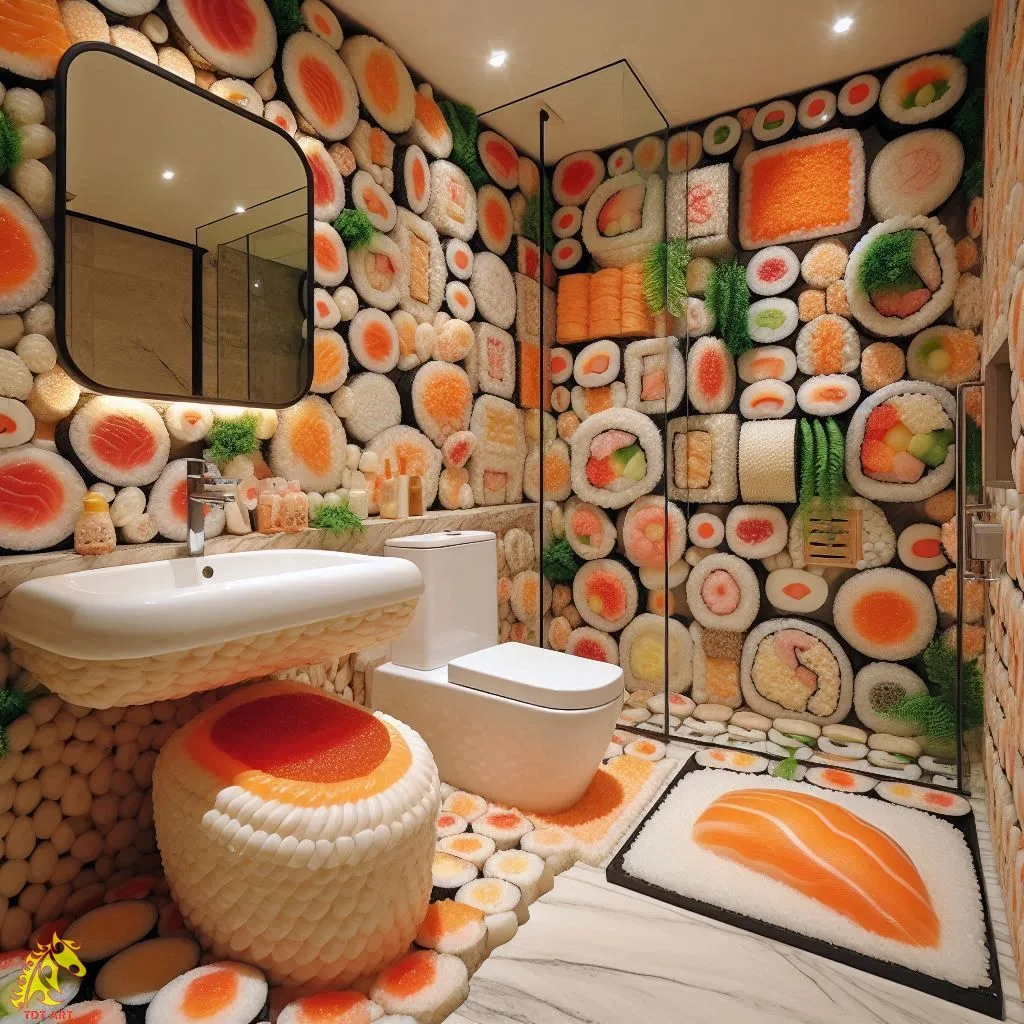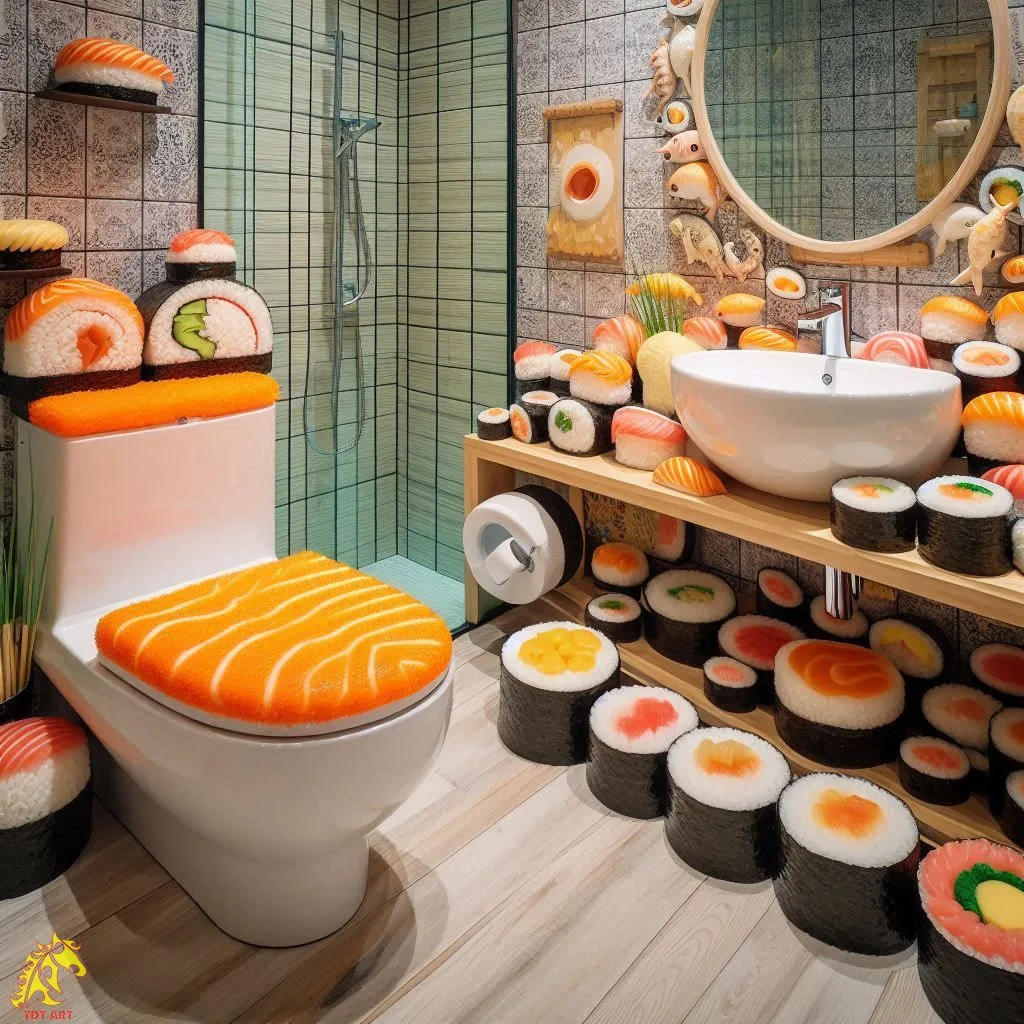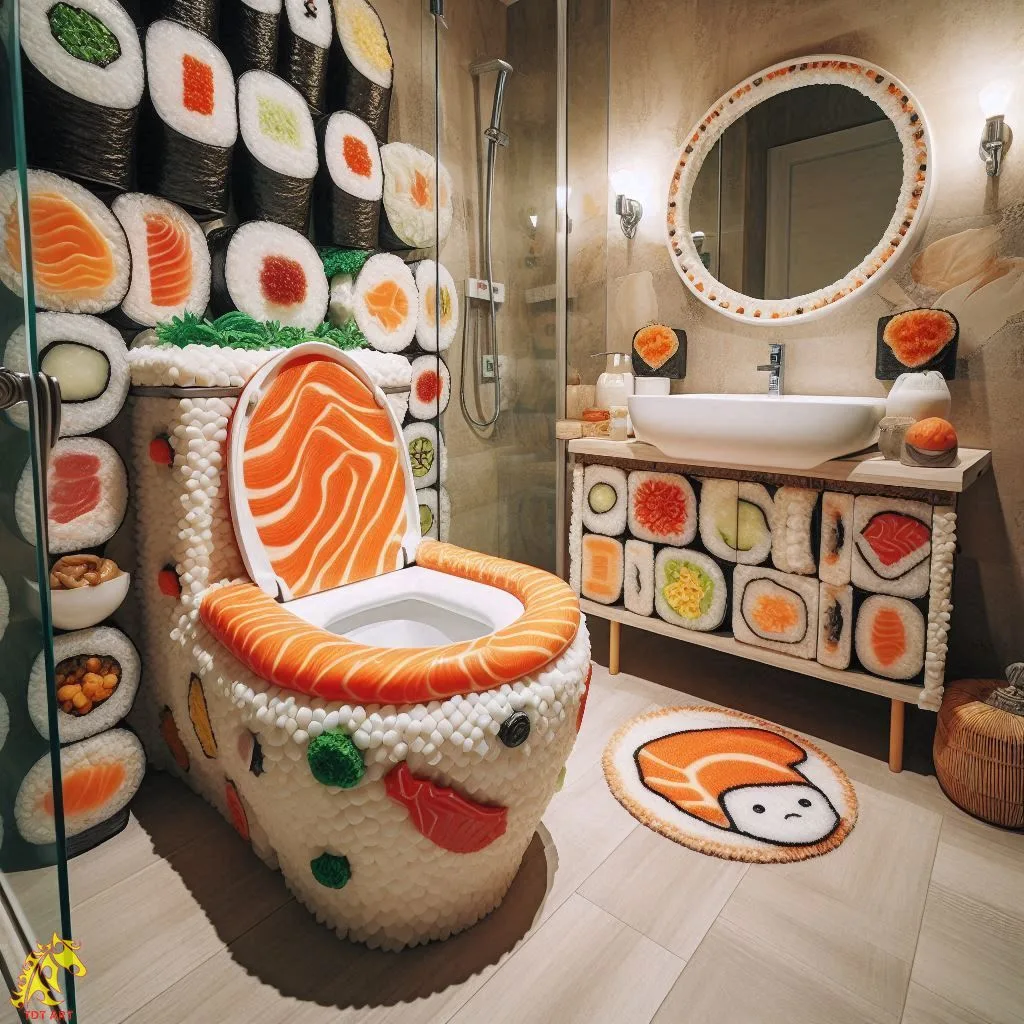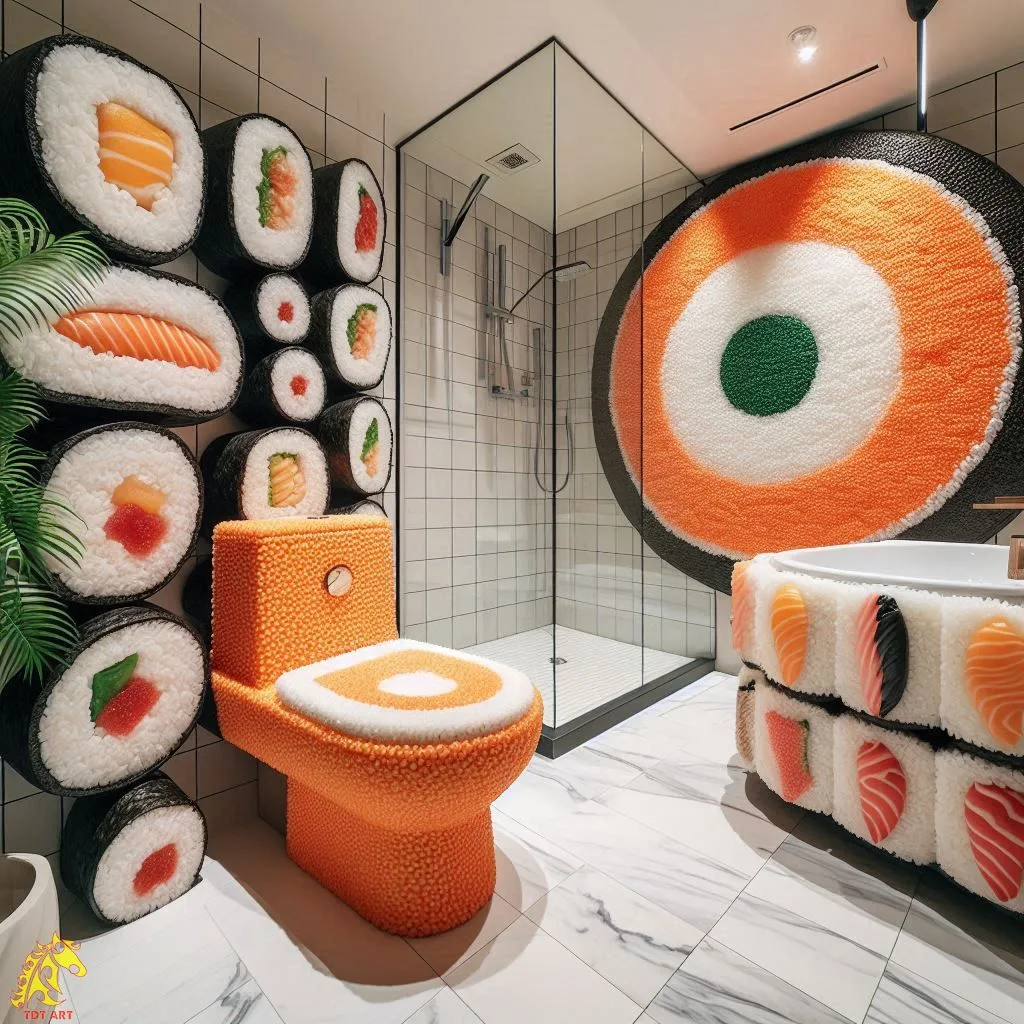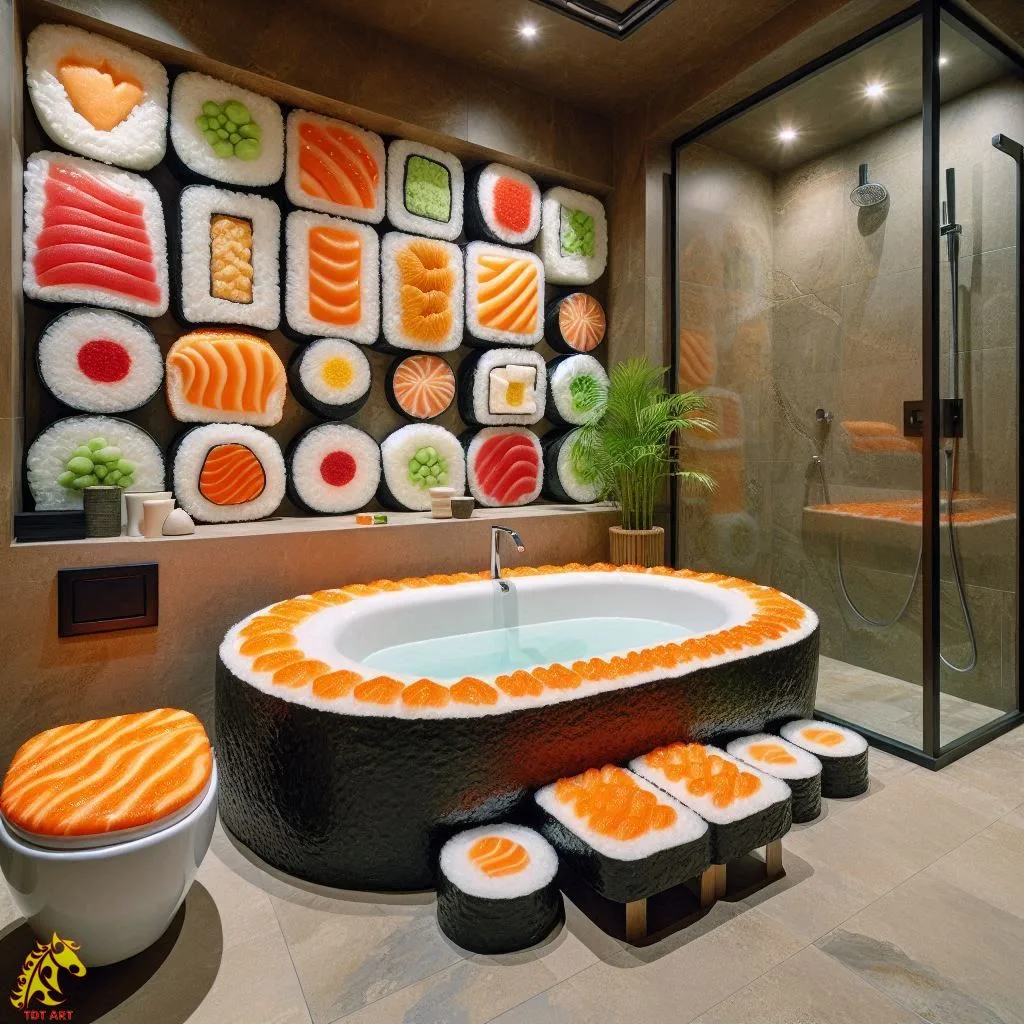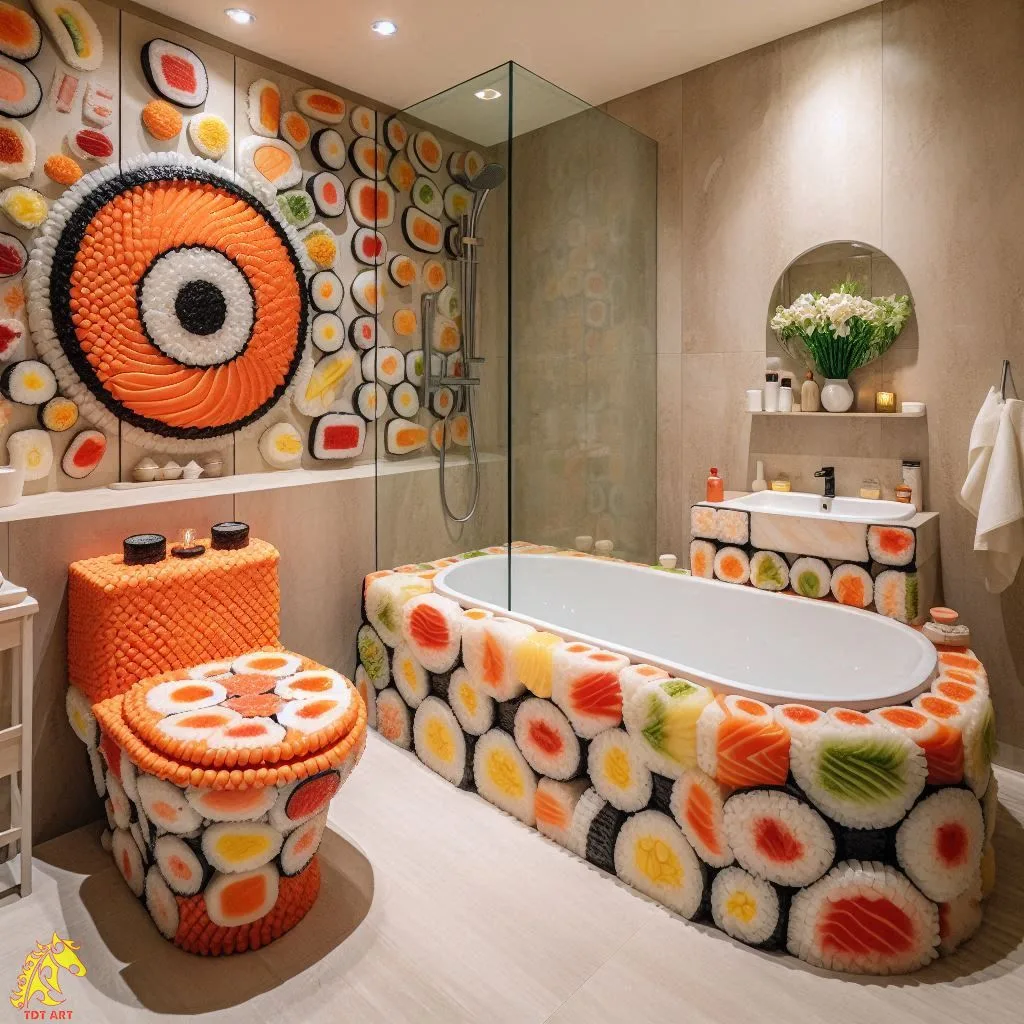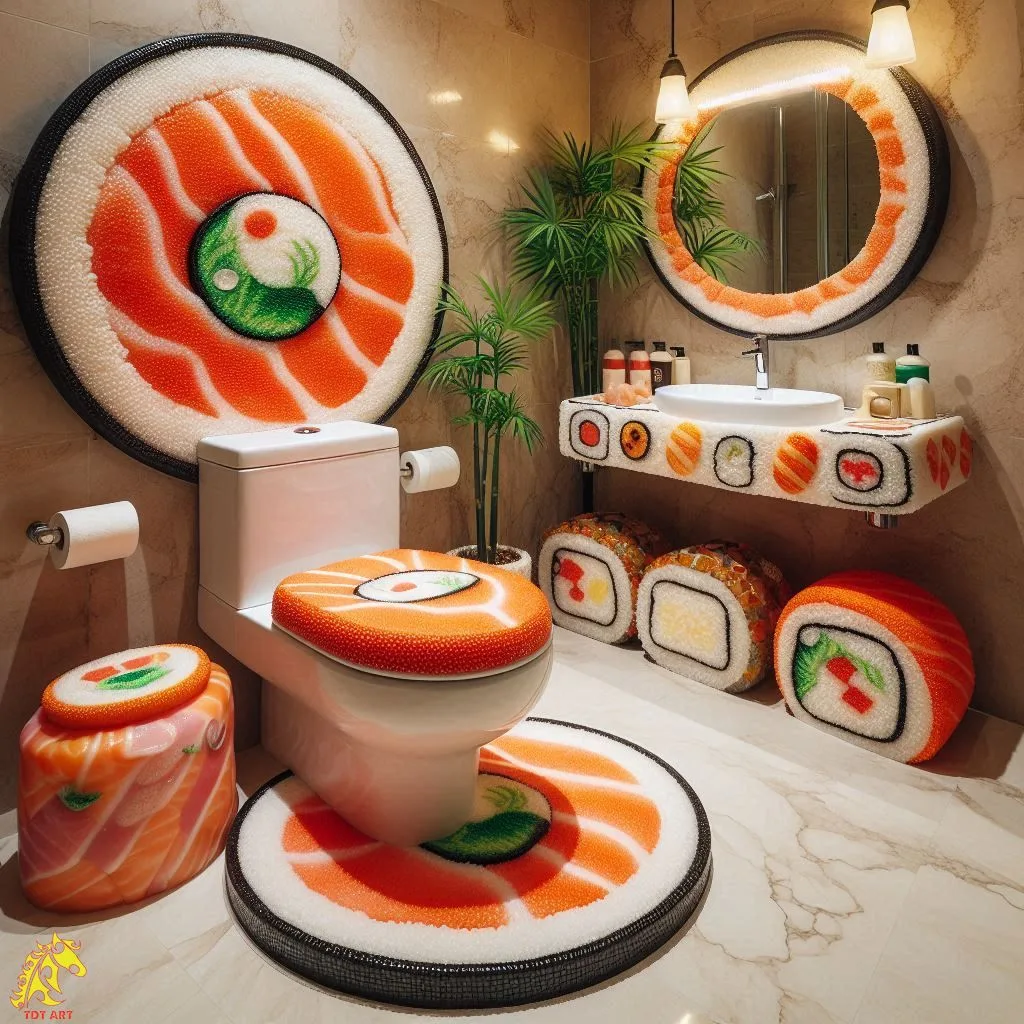Sushi-inspired bathroom design combines elegance with functionality. This unique approach reflects the simplicity and beauty of Japanese aesthetics. Clean lines, natural materials, and calming colors create a serene environment. Elements like bamboo accents and stone textures enhance the overall atmosphere. Incorporating these features can transform a standard bathroom into a tranquil retreat. Attention to detail is essential in achieving this design style. Explore the key components that make sushi-inspired bathrooms both stylish and relaxing. Discover how to infuse your space with a touch of Japanese culture while maintaining modern comfort.
Key Takeaways
- Incorporate key elements of Japanese style, such as minimalism and natural materials, to create a sushi-inspired bathroom design.
- Focus on creating a serene ambiance by using soft lighting and calming colors that evoke the tranquility of a sushi restaurant.
- Select textures and materials like bamboo, stone, and smooth ceramics to enhance the overall aesthetic and feel of your bathroom.
- Harmonize your design with cultural references by including traditional Japanese art or decor that reflects the sushi theme.
- Keep functionality in mind; ensure that your design choices also cater to practical needs without compromising on style.
- Consider incorporating plants or water features to bring in a touch of nature, reminiscent of the fresh ingredients used in sushi.
Key Elements of Japanese Style
Simplicity
Simplicity defines Japanese design. The focus remains on functionality and minimalism. Clutter-free spaces create a calming atmosphere. This principle translates well into bathroom design. Essential items should be prioritized over decorative ones.
Natural Materials
Natural materials enhance the connection to nature. Wood, stone, and bamboo can be used in various elements. Shoji screens add elegance while allowing light to filter through. These screens also provide privacy without closing off the space completely.
Color Palette
A neutral color palette promotes tranquility. Shades of white, beige, and soft greens mimic natural surroundings. Accents of cherry blossoms can introduce subtle color. These colors evoke the beauty of Japanese gardens and create a serene environment.
Sushi Elements
Incorporating sushi elements adds a unique touch. Decorative sushi mats can serve as wall art or table runners. Favorite sushi rolls can inspire patterns or motifs in tiles and textiles. This connection to sushi culture reflects personal tastes and experiences.
Indoor-Outdoor Flow
Creating an indoor-outdoor flow is essential. Large windows allow for natural light and views of gardens. This design encourages a seamless transition between spaces. It enhances relaxation and brings the outside in.
Creating a Serene Ambiance
Color Palette
Choose a calming color palette inspired by nature. Soft greens, blues, and earthy tones evoke tranquility. These colors create a serene aesthetic in the bathroom. Light hues can make the space feel larger and more inviting.
Lighting Options
Integrate soft lighting options to enhance relaxation. Use dimmable lights to adjust brightness according to the time of day. Consider adding candles for a warm glow. Natural light also plays a vital role. Large windows can bring in daylight, creating a harmonious bathroom atmosphere.
Sound Elements
Incorporate sound elements to promote peace. Water features, like small fountains, can add soothing sounds. Gentle music or nature sounds can enhance the ambiance as well. These elements work together to create a calming bath experience.
Artful Accents
Add artful accents that reflect the tranquil sushi bar concept. Choose decor items that feature natural materials such as bamboo or stone. These pieces contribute to a stylish bathroom that feels connected to nature.
Overall Atmosphere
Focus on creating an overall atmosphere of relaxation. Each element should work together seamlessly. The goal is to transform the bathroom into a mesmerizing space that inspires calmness and rejuvenation.
Choosing Textures and Materials
Natural Materials
Natural materials like bamboo and stone are essential for a sushi-inspired bathroom design. Bamboo adds warmth and a touch of nature, while stone brings durability and elegance. These materials reflect the organic essence of sushi, connecting the space to its culinary roots.
Textural Variety
Combining different textures enhances visual interest. Use ceramic tiles for flooring to provide a sleek surface. Pair them with soft mats to create comfort underfoot. This blend invites a tactile experience that engages the senses. Balancing smooth and rough textures maintains a cohesive look throughout the bathroom.
Eco-Friendly Choices
Prioritizing eco-friendly materials is crucial in modern design. Many sustainable options exist that align with green practices. Recycled glass fixtures or low-VOC paints contribute to a healthier environment. Choosing these materials shows commitment to sustainability while enhancing the overall aesthetic.
Color Palette
Selecting colors also plays a significant role. Earthy tones like greens, browns, and neutral shades evoke a calming atmosphere. These colors can mimic the natural hues found in sushi ingredients, such as seaweed and rice. A well-thought-out color palette ties all elements together, creating harmony in the space.
Harmonizing Design and Culture
Cultural Elements
Japanese culture plays a significant role in sushi-inspired bathroom design. Elements like tea ceremonies and Zen gardens can be incorporated into the space. These features promote tranquility and mindfulness. A small rock garden or bamboo plants can enhance the overall ambiance.
Artistic Symbols
Artwork is crucial for deepening the thematic connection. Incorporating traditional Japanese art, such as ukiyo-e prints, adds authenticity. Decorative items like handcrafted ceramics can also reflect cultural appreciation. These details create a cohesive look that honors Japanese heritage.
Mindfulness in Space
Mindfulness is essential in this design journey. Minimalist design encourages simplicity and clarity. This approach fosters a sense of calm. Users can appreciate the beauty of their surroundings without distractions. Soft lighting and natural materials contribute to this atmosphere.
Layout Considerations
The layout should promote harmony and flow. Open spaces encourage movement and relaxation. Strategic placement of decor enhances the overall energy of the room. For example, a freestanding tub can serve as a focal point while maintaining balance.
Design Principles
Incorporate fundamental design principles to ensure cohesion. Balance, proportion, and rhythm are key elements to consider. Each aspect should work together to create a serene environment that reflects both modern aesthetics and cultural roots.
Final Remarks
The sushi-inspired bathroom design encapsulates the essence of Japanese aesthetics. It combines key elements like serene ambiance, thoughtful texture, and cultural harmony. Each aspect contributes to a tranquil environment, ideal for relaxation. The integration of natural materials enhances the overall experience, making the space feel both inviting and grounded.
This design approach encourages individuals to reflect on their surroundings. By embracing these principles, one can create a bathroom that transcends mere functionality. It becomes a personal sanctuary. Those interested in this unique style are urged to explore further, considering how they might incorporate these elements into their own spaces. This exploration not only enhances personal well-being but also fosters a deeper appreciation for Japanese culture and design philosophy.




